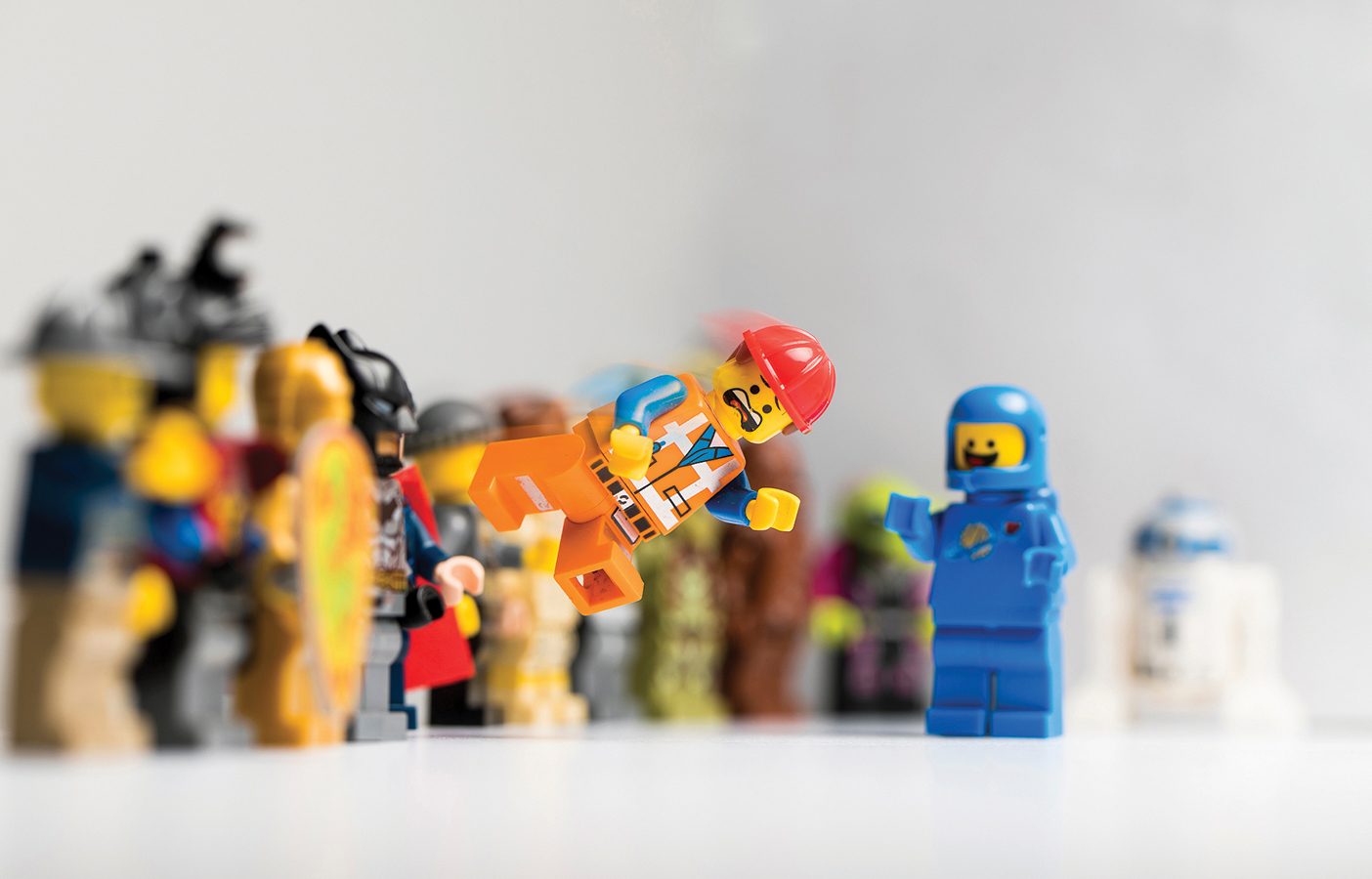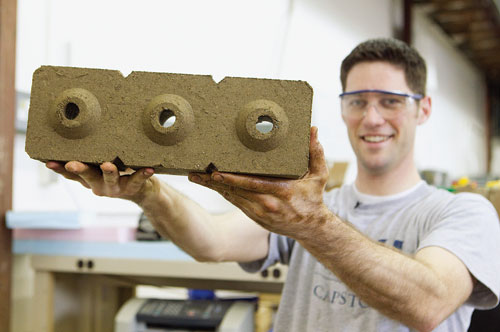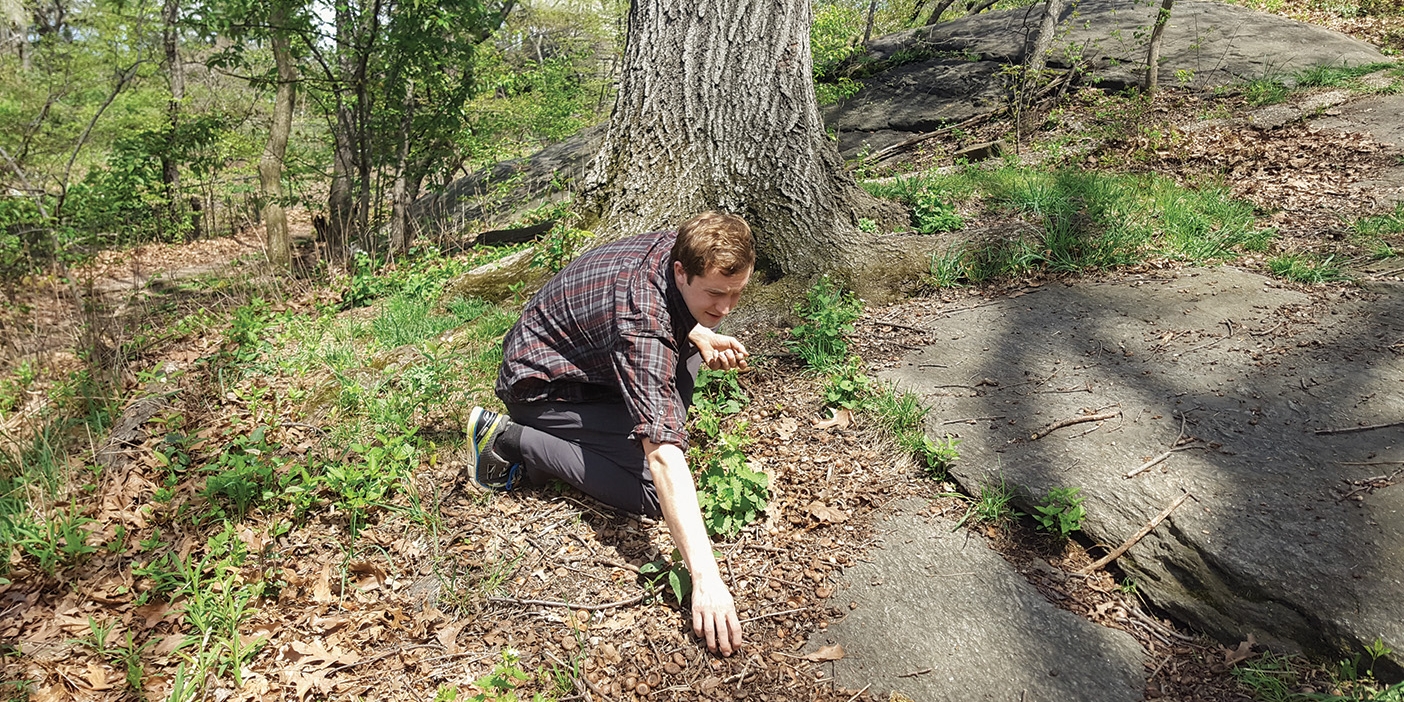A crowd of 29 stands still—Spider-Man, a ninja, and others positioned as lookouts at various positions on a table. A chirp punctuates the silence before being replaced by a distinct buzz, which grows louder before abruptly dropping back into silence. Twenty-eight Lego figurines shift slightly—they survive. But Batman lies on his back, toppled by an invisible force.
The culprit of this miniature crime scene? Targeted sound waves—also known as time reversal—courtesy of BYU physics professor Brian E. Anderson (BS ’01, MS ’03).
The process is a bit complex (more on that later), but the sci-fi name and the Lego minifigs have a certain cachet with one of Anderson’s target audiences: children. Toppling Legos serves as a way for Anderson to make his main research program on the mechanics of time reversal both accessible and fun for elementary-school students.
“At first science can seem intimidating and complicated [to children],” he says, “but when you use something like Lego figurines to demonstrate the power of science, maybe they’ll realize that when they grow up, science can enable them to keep on playing.”
Anderson and student coauthors recently published research on their child-friendly science demonstrations in the Journal of the Acoustical Society of America. In the name of entertaining youngsters, the team has upended a variety of objects. When sound targets a Lego, the Lego leaps in the air before crashing to the ground. When sound targets salt sprinkled on a table, hundreds of grains rise and fall like a fountain, but only at the focal point of the sound waves. It’s a blink-and-you’ll-miss-it moment.

“Time reversal is really like ventriloquism,” Anderson says. “But instead of throwing our voice to another place, we’re focusing vibrations at a target location that may be far from where the vibrations originated.”
Neither a Time-Turner nor a DeLorean is necessary for time reversal to work, precisely because Anderson isn’t reversing time. “It’s called time reversal, but we’re not getting younger by doing this,” he says. Instead, the technique involves recording a sound wave or vibration with a sensor and then using software to reverse the signal before sending it back out. That simple reversal causes the waves to retrace their steps, allowing Anderson and team to focus the sound waves at the intended target.
While this technique can easily knock over Lego figurines, its applications go much further. Some are using time reversal to destroy kidney stones or locate underwater objects like submarines. Anderson employs it to locate cracks in nuclear waste storage containers, and he envisions a number of additional uses in areas such as targeted noise cancellation.
Anderson’s Lego research has had benefits at home as well. “I didn’t have any brothers growing up,” Anderson says. “Now I have all boys. I finally have friends to play with—with Legos.”












